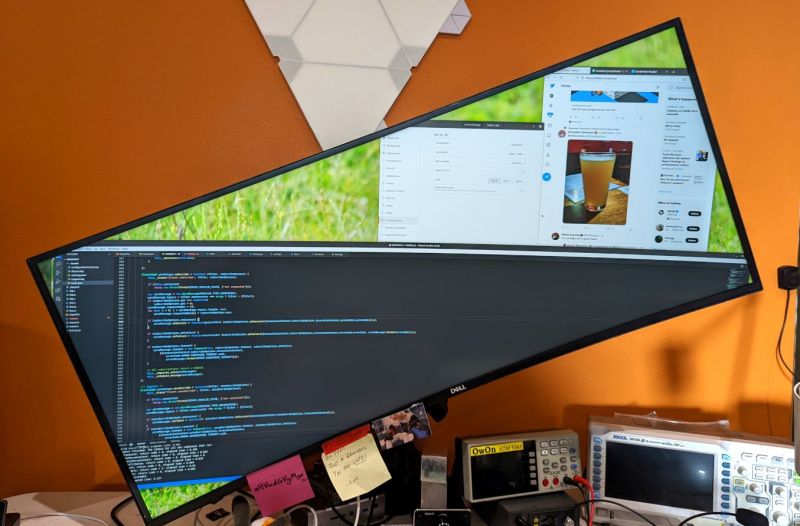Welcome To The Year Of The Diagonal Linux Desktop

Sometimes you come across one of those ideas that at first appear to have to be some kind of elaborate joke, but as you dig deeper into it, it begins to make a disturbing kind of sense. This is where the idea of diagonally-oriented displays comes to the fore. Although not a feature that is generally supported by operating systems, [xssfox] used the xrandr (x resize and rotate) function in the Xorg display server to find the perfect diagonal display orientation to reach a happy balance between the pros and cons of horizontal and vertical display orientations.
As displays have gone wide-and-wider over the past decades, some people rotate their displays 90 degrees to get more height instead, which is beneficial when reading documents, yet terrible when watching most video content, barring vertical videos, so you either need more than one display, keep rotating, or settle on an optimal intermediate compromise. Interestingly, this wasn’t found at a straight 45°, but instead at 22° of rotation for [xssfox]’s 21:9 ratio ‘ultra-wide’ display. The xrandr settings for other display ratios can be easily calculated using the provided formula and associated JS-based tool.
So what are the advantages here? You get to keep long line lengths in IDEs, while gaining more vertical pixels in some areas. As disadvantages it only works with Xorg at this time, it’s a terrible setup for people prone to vertigo, and it’s decidedly hostile towards top-of-display mounted webcams. Yet with others picking up on this new trend, Linux might just corner the diagonal desktop.
from Blog – Hackaday https://ift.tt/hjl3g0k
Comments
Post a Comment